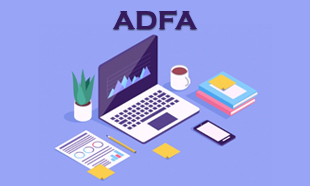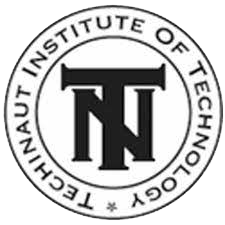0
A Comprehensive Overview of the "Advance Diploma in Financial Application (ADFA)" Course at DINESH EDUCATION, a Techinaut Institute of Technology Franchise in SEMILIGUDA, ODISHA
In the realm of finance, proficiency in financial applications is essential for individuals aspiring to pursue careers in accounting, finance, and business management. Recognizing this demand, Dinesh Education, a franchise of Techinaut Institute of Technology, offers a one-year Advance Diploma in Financial Application (ADFA) course. Situated in Semiliguda, Odisha, this program aims to equip students with the necessary skills and knowledge to excel in financial management roles. This essay provides an in-depth overview of the ADFA course curriculum, covering its objectives and each module comprehensively.
OBJECTIVES OF THE COURSE:
The ADFA course at Dinesh Education is designed to achieve the following objectives:
- Basic Computer Skills:
Introduce students to fundamental concepts of computing, including hardware, software, and operating systems.
- Computer Appreciation:
Cultivate an understanding and appreciation of the role of computers in financial management and business operations.
- Computer Organization:
Provide insights into the structure and components of a computer system relevant to financial applications.
- Operating System:
Familiarize students with different operating systems and their functionalities, emphasizing their relevance to financial software.
- MS Office Applications:
Develop proficiency in Microsoft Office tools such as Word Processing, Spreadsheet, and Presentation software tailored for financial tasks.
- Introduction to the Internet:
Introduce students to the basics of Internet usage and online resources relevant to financial research and information gathering.
- E-mail Communication:
Enable students to utilize e-mail effectively for professional communication in financial contexts.
- Introduction to Tally:
Provide a comprehensive introduction to Tally, a popular accounting software widely used in businesses.
- Administration in Tally:
Cover the administrative functions and settings in Tally to manage user access, security, and data management.
- Managing Groups, Ledgers, and Vouchers:
Explore the process of creating and managing groups, ledgers, and vouchers in Tally for accurate financial recording.
- Cost Centres and Cost Categories:
Discuss the concepts of cost centers and cost categories in Tally and their significance in financial reporting and analysis.
- Introduction to Budgets:
Introduce students to budgeting concepts and demonstrate how to create and manage budgets using Tally.
- Introduction to Voucher:
Explain the various types of vouchers used in Tally for recording different financial transactions.
- Currencies (Multiple Currencies and Foreign Exchange):
Cover the features of handling multiple currencies and foreign exchange transactions in Tally.
- Inventory Information:
Discuss inventory management in Tally, including stock maintenance, valuation methods, and inventory reports.
- Voucher Entry:
Provide hands-on training on voucher entry in Tally for recording various financial transactions accurately.
- Displaying Information from Tally:
Teach students how to generate and interpret various financial reports and statements from Tally.
- Introduction to Taxation:
Introduce students to basic taxation concepts and demonstrate how to handle tax-related transactions in Tally.
- Introduction to Payroll:
Provide an overview of payroll management and demonstrate how to process payroll transactions in Tally.
COURSE CURRICULUM:
Basic of Computer:
This module serves as a foundation, covering basic computer concepts relevant to financial applications. Topics include hardware, software, operating systems, and peripherals.
Computer Appreciation:Students gain an understanding of the role of computers in financial management and business operations. They explore the benefits of using computers in financial analysis, reporting, and decision-making.
Computer Organization:This module delves into the internal structure and components of a computer system, focusing on aspects relevant to financial applications such as processing power, memory, and storage.
Operating System:Students learn about different operating systems and their features, with a focus on compatibility and performance considerations for financial software.
MS Word Processing:This module focuses on using word processing software such as Microsoft Word for creating financial documents, reports, and correspondence.
MS Spreadsheet Package:Students gain proficiency in spreadsheet software such as Microsoft Excel for financial analysis, budgeting, and forecasting.
MS Presentation Package:This module covers presentation software such as Microsoft PowerPoint for creating financial presentations and reports.
Introduction to the Internet:Students learn how to use the Internet for financial research, data gathering, and accessing online resources relevant to finance.
E-mail Communication:Students learn to use e-mail for professional communication, including sending financial reports, inquiries, and correspondence.
Introduction to Tally:This module provides an overview of Tally, its features, and its relevance in financial accounting and management.
Administration in Tally:Students learn how to set up and configure Tally for efficient financial management, including user management, security settings, and data backup.
Managing Groups, Ledgers, and Vouchers:Students learn how to create and manage groups, ledgers, and vouchers in Tally for accurate financial recording and reporting.
Cost Centres and Cost Categories:This module covers the concept of cost centers and cost categories in Tally and their application in financial analysis and reporting.
Introduction to Budgets:Students learn how to create and manage budgets in Tally for effective financial planning and control.
Introduction to Vouchers:This module covers the various types of vouchers used in Tally for recording different financial transactions.
Currencies (Multiple Currencies and Foreign Exchange):Students learn how to handle multiple currencies and foreign exchange transactions in Tally.
Inventory Information:This module covers inventory management in Tally, including stock valuation, tracking, and reporting.
Voucher Entry:Students gain hands-on experience in voucher entry in Tally for recording various financial transactions accurately.
Displaying Information from Tally:Students learn how to generate and interpret financial reports and statements from Tally for decision-making and analysis.
Introduction to Taxation:This module introduces students to basic taxation concepts and demonstrates how to handle tax-related transactions in Tally.
Introduction to Payroll:Students learn about payroll management and how to process payroll transactions in Tally.
CONCLUSION:
The Advance Diploma in Financial Application (ADFA) course at Dinesh Education offers a comprehensive curriculum designed to equip students with essential skills and knowledge in financial management and accounting software. By covering a wide range of topics, from basic computer skills to advanced Tally functionalities, the course prepares students for various roles in finance and accounting domains. With hands-on training and practical exercises, students gain proficiency in using technology to streamline financial processes, analyze data, and make informed decisions. Dinesh Education remains committed to providing quality education and empowering individuals to succeed in the competitive field of finance and accounting.
Lectures = 260 HRS
Practical/Tutorials = 260 HRS
Total = 520 HRS


